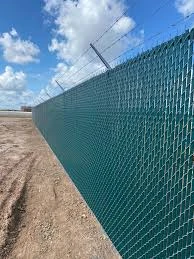Understanding Round Post Fencing A Comprehensive Guide
Fencing is an essential aspect of property management and boundary establishment. When it comes to fencing options, round posts are a popular choice due to their aesthetic appeal, durability, and ease of installation. This article explores round post fencing, discussing its benefits, uses, materials, and installation procedures.
Benefits of Round Post Fencing
1. Aesthetic Appeal One of the significant advantages of round posts is their natural look. Round posts, especially when made from wood, add a rustic charm to any landscape. This aesthetic quality makes them ideal for rural properties, gardens, and areas where a natural appearance is desired.
2. Durability Round posts are often made from various materials, including treated wood, vinyl, steel, and composite materials. Treated wood, in particular, is known for its strength and longevity, making it resistant to rot and insect damage. Metal posts can provide additional resistance to weather elements, ensuring the fence’s integrity over time.
3. Versatility Round post fencing is versatile and can be used in various applications, from residential properties and farms to parks and commercial buildings. Round posts can support different types of fencing materials, including wire mesh, boards, and even vinyl panels, adapting to different needs and preferences.
4. Ease of Installation Round posts are often easier to install than their square counterparts. Their uniform shape allows for simpler digging and setting procedures. Many homeowners and DIY enthusiasts find that they can install round post fencing with minimal tools and experience, saving on labor costs.
Common Uses for Round Post Fencing
Round post fencing has a range of applications. Here are a few common uses
- Agricultural Fencing Farmers often use round posts for livestock fencing. The design provides a sturdy barrier while allowing for flexibility when using wire between the posts to create effective enclosures for cattle, sheep, and other animals.
- Garden Fencing For homeowners looking to define their garden or yard, round post fencing can create a charming boundary without obstructing views. It enhances the landscape while providing a barrier against animals that may damage plants.
- Pool Enclosures Round posts are also suitable for pool enclosures, providing safety while maintaining a scenic outlook. They can effectively support mesh or picket designs that comply with local safety regulations.
- Commercial Fencing Businesses may use round post fencing for decorative purposes or to secure their premises. The choice of materials can reflect the company's branding and create a welcoming atmosphere.
round post for fence

Materials for Round Posts
When selecting round posts for fencing, it’s crucial to consider the material’s pros and cons
- Wood Pressure-treated wood posts are very common due to their natural look and cost-effectiveness. However, they require regular maintenance to prevent rot and weather damage.
- Vinyl Vinyl round posts provide a low-maintenance alternative, minimizing the need for repainting or treating. They come in various colors and styles, making them customizable, although they may be more expensive than wood.
- Steel and Aluminum Metal round posts exhibit extreme durability and resistance to weather elements. They are ideal for high-security applications. However, they may not have the same aesthetic appeal as wood or vinyl.
Installation of Round Post Fencing
1. Planning Begin by planning your fence layout. Measure the area and determine the spacing for your posts, typically 8 to 10 feet apart, depending on the material you will use between them.
2. Digging Holes Use a post hole digger or auger to create holes for your posts. The depth should be at least one-third of the post length, ensuring stability.
3. Setting the Posts Insert the posts into the holes and add concrete for support, ensuring they are level and aligned. Allow the concrete to set as per the manufacturer's instructions.
4. Attaching Fencing Material Once the posts are securely in place, attach your chosen fencing material. This could be wire, boards, or panels, depending on your design preferences.
5. Finishing Touches Trim any excess posts, treat wooden posts if required, and ensure everything is neat and secure.
Conclusion
Round post fencing offers a blend of aesthetic appeal, durability, and versatility, making it a favored choice for various applications. Understanding its benefits, applications, and installation process allows homeowners and property managers to make informed decisions when considering fencing solutions. Whether for practical purposes or decorative enhancements, round posts can provide effective boundaries that elevate any landscape.
















